If you’re a woman traveling to Madagascar and thinking about what to pack and wear, you’ve come to the right place.
In this article, we will look at what the weather will be like and local customs and cultural norms, as well as tips to stay comfortable and ready for all the outdoor adventures we take on our women only tour.
Don’t be fooled by its tropical location near Africa and its island condition, not all of Madagascar is warm all year round, so knowing what to expect is key to be prepared.
See our Amazon Madagascar packing list with all the product recommendations mentioned here.
What to expect on a trip to Madagascar
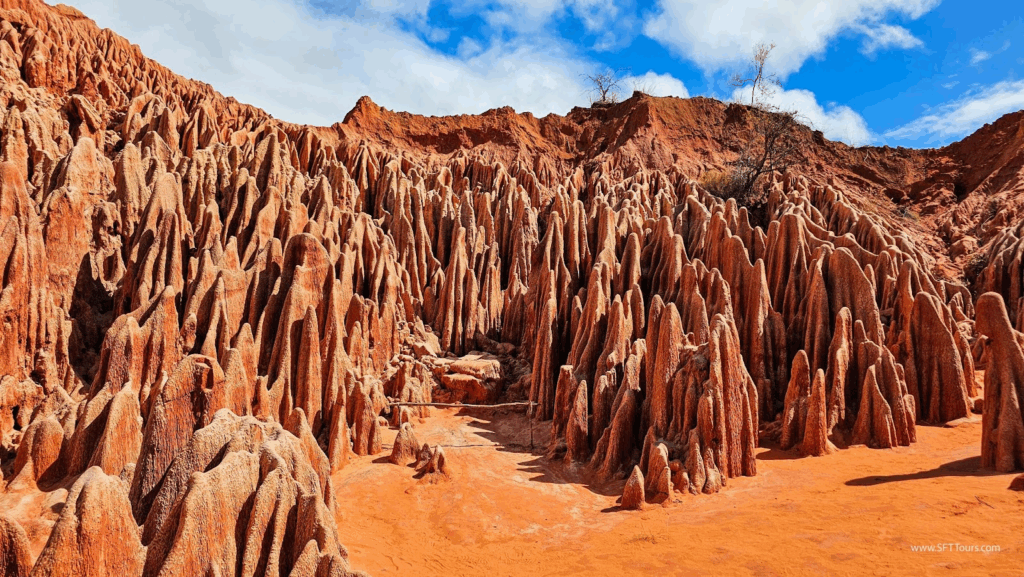
Madagascar is near the Equator and this means that it is hot and humid all year round, and extra wet during the Monsoon season when tropical storms fill the air and the humidity rises, or in the rainforests where it is always damp.
Antananarivo is the exception; being a bit elevated means that the temperatures drop a bit at night, even though it is very hot during the day.
Because the majority of the country doesn’t cool down much and the humidity is high, you should expect to be constantly sweating. While you may be tempted to wear as few clothes as possible, you also need to make sure you are protecting yourself from the sun, which is very strong at such latitudes, and the mosquitoes that are ever present.
So, on a trip to Madagascar you should plan your clothing for high humidity, sunshine, showers, heat, and bugs like mosquitoes.
Weather in Madagascar
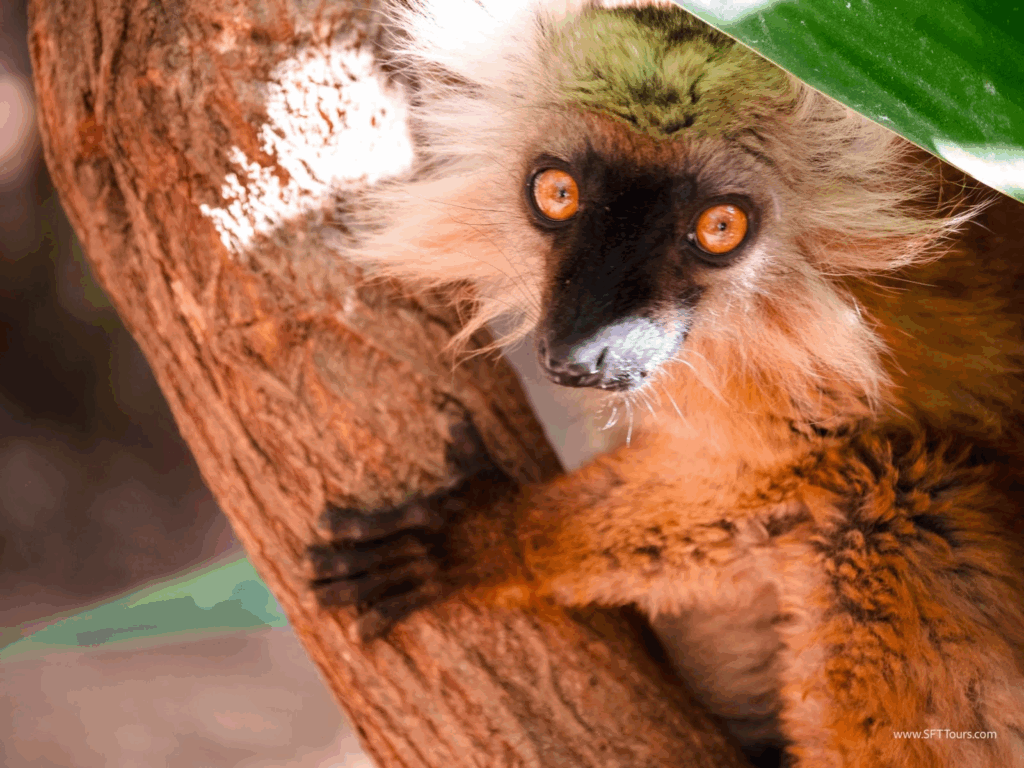
As mentioned, Madagascar enjoys a tropical climate with two distinct seasons: a wet season from November to April and a dry season from May to October. Tropical cyclones can hit the island from November to May bringing excessive rains and winds.
Landslides, collapsed bridges, floods and other natural disasters and their subsequent damage to infrastructure are an annual occurrence. Normally, by the time the rainy season ends, repair works start. Remote parts of the country may take longer to receive help or not receive it at all.
Even in the dry season, showers can always happen in the rainforests and can surprise travelers throughout the year anywhere in the country, especially in the east coast, so being prepared is a must.
It’s also important to remember that the island-nation is located in the Southern Hemisphere and therefore enjoys opposite seasons with winter spanning June to September and summer from December to March.
Although the coast never experiences cold temperatures, the maximums do drop a bit especially between July and August. Inland, the weather is more continental, drier and cooler.
When it is colder, wildlife such as chameleons, which are cold blooded and need warmth, may hide to preserve heat. When it rains, flora flourishes and thrives. When it is too hot, lemurs hide in the shade.
During our trip to Madagascar, we will focus on the capital and eastern region near Tana and the northern parts of the country, including the Nosy Be archipelago. Here are the weather and climate statistics for these regions.
The north and Nosy Be

The northern part of the country is characterised by warm temperatures that are split into long dry summers and wet winters.
Winter (May to October)
This is the winter dry season but it is warm and with plenty of sunshine.
- Days of rain per month: 2 to 4 with minimal precipitation.
- Temperature: 20 C to 30 C with July and August being the coolest months (68 – 86 F)
- Hours of sunshine per day: 9 to 10 hours.
Summer (November to April)
- Days of rain per month: 9 to 15 with rain.
- Temperature: 23 C to 32 C / 74 – 90 F
- Hours of sunshine per day: 6 to 7 hours.
Tana
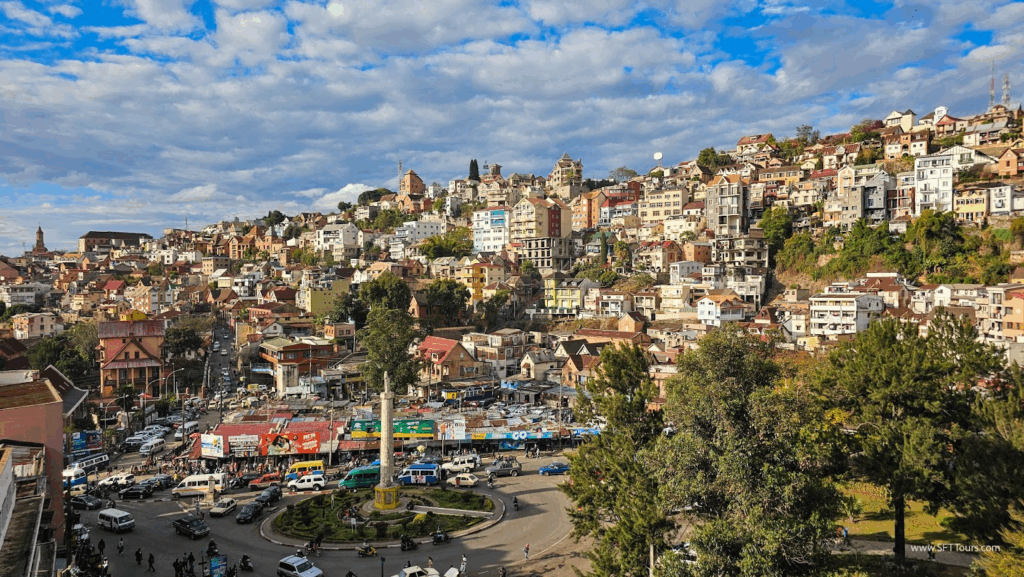
Antananarivo is located inland and slightly elevated (1,300m above sea level) and this helps keep the city mostly dry except for during the Monsoon season, and with more reasonable temperatures than the rest of the country.
While it may get hot during the day, temperatures in the early morning and evening drop enough to require a jacket.
Winter (May to October)
- Days of rain per month: 1 day.
- Temperature: 12 C to 26 C / 54 to 79 F.
- Hours of sunshine per day: 7 to 8 hours.
Summer (November to April)
- Days of rain per month: 9 to 17 days.
- Temperature: 16 C to 27 C / 61 to 81 F.
- Hours of sunshine per day: 7 to 8 hours.
The east – Andasibe
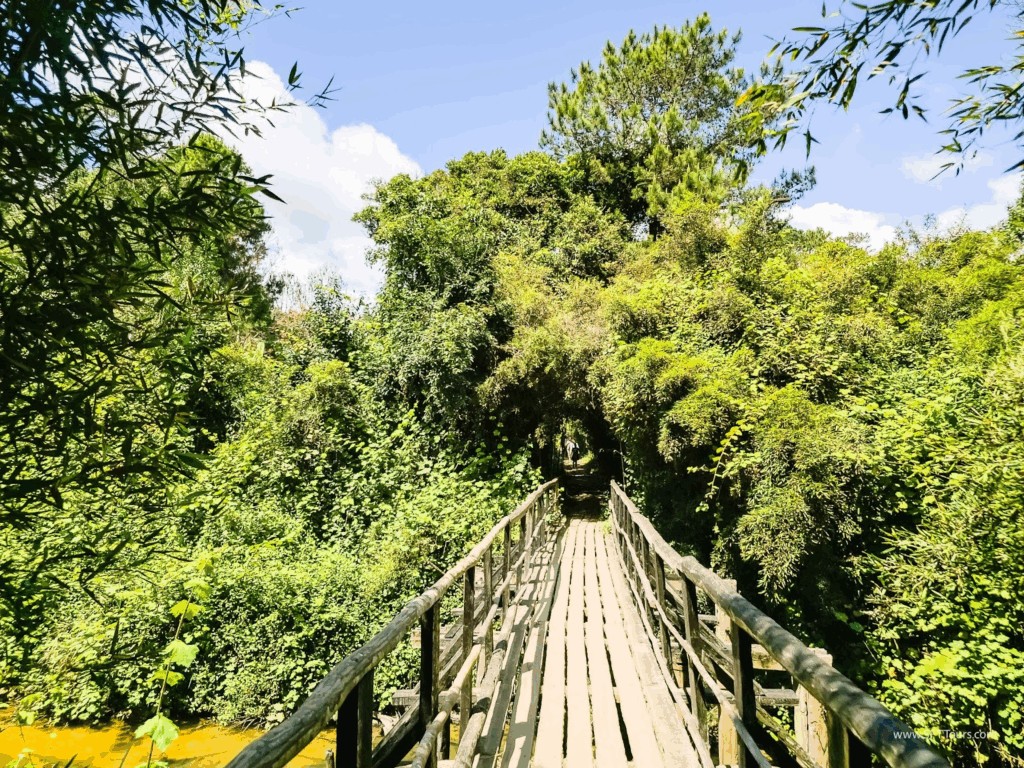
The eastern part of the country is affected by south-east trade winds that bring cool and dry air but also lots of rain throughout the year that create the lush tropical rainforests in Andasibe
Winter (May to October)
- Days of rain per month: 12 to 20 days, with October being the driest and July the wettest.
- Temperature: 26 C to 28 C / 79 – 83 F.
- Hours of sunshine per day: 5 to 8 hours.
Summer (November to April)
- Days of rain per month: 15 to 20 days, with March being the rainiest.
- Temperature: 28 to 31 C / 83 – 88 F.
- Hours of sunshine per day: 6 to 8 hours.
How to dress in Madagascar

Now that you know what kind of weather to expect, there are a few other considerations that are also important when thinking about what to pack for Madagascar.
Not big fans of AC
Madagascar’s infrastructure is limited and air conditioning is not something you are bound to find anywhere besides the hotel rooms of the higher end accommodation.
In Tana, this is usually not much of an issue as temperatures tend to be mild all year round, but in the coast and the north, sweating constantly is pretty common, and everyone does.
Bringing your own personal fan or portable neck AC is a great idea if you don’t do well in the heat, as well as packing breathable, light clothes.
Breathable fabrics
As per my previous point, because it is hot and humid, natural breathable materials are best. Think cotton, linen, quick dry materials, or even bamboo fabric are breezy and more comfortable than polyester.
Also consider packing long sleeves and long trousers to protect from the mosquitoes that are abundant throughout the country.
Your typical outdoor clothing, similar to what you would be wearing if you went hiking in nature, would be perfect for most of the park outings and wildlife spotting excursions.
Footwear
Wearing appropriate footwear is a must.
Tana has poor public infrastructure when it comes to managing trash and sewage and it is common to walk around puddles of dirty water and rubbish, you don’t want to do that with open-toe sandals on.
In the national parks, mud and moist will be common, and the ground can be slippery and will certainly be rugged, rocky and full of tree roots, even in the marked trails.
Waterproof hiking shoes will come in handy because of the unexpected rain in Andasibe, but high boots are not necessary and will be bulky and uncomfortable on long car rides.
At the beach, reef shoes will help with snorkelling and swimming, and any kind of sandal will be easiest to take off and on when walking on the sand. In Nosy Be / Nosy Komba, the vibe is laid back and relaxed so flip flops are what most people wear.
Locals tend to dress casually
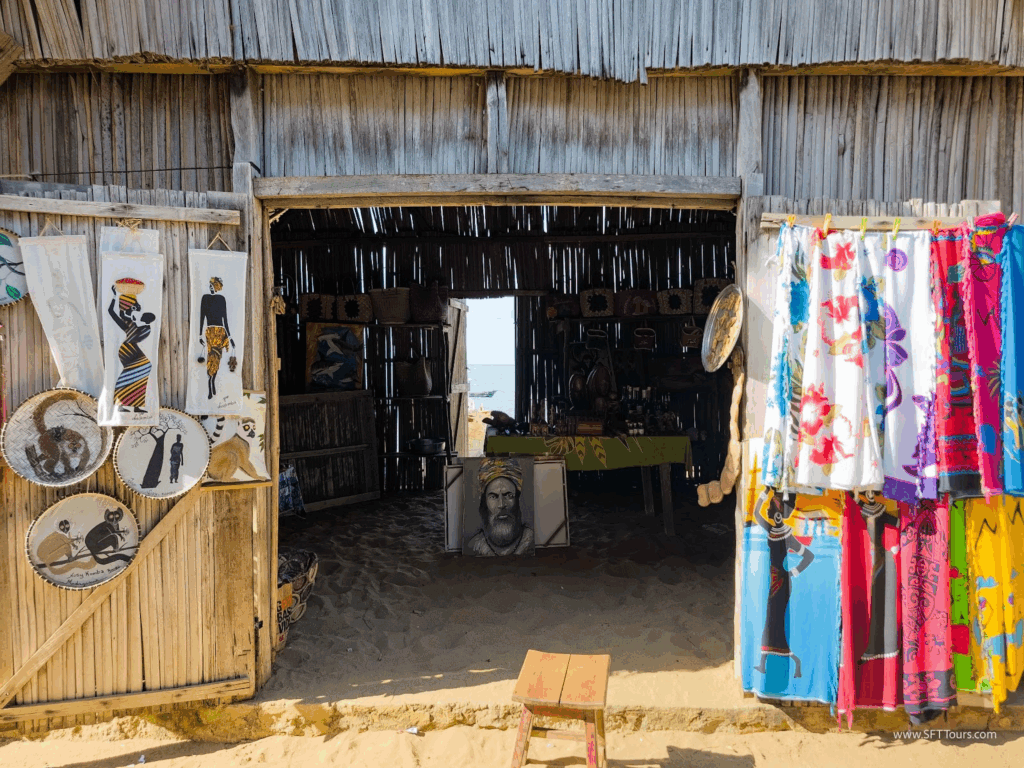
You will find locals wearing comfortable clothing all year round and favor what is practical over what looks good, especially on the coast where hot weather invites laid back outfits.
Showers can happen anytime, anywhere
Even in the dry season, showers can occur anytime and come unexpectedly onto you without warning. Having a rainjacket or poncho handy will help you stay warm and dry.
Make-up and blow driers are practically pointless
While you can definitely wear make up and blow dry your hair, the weather will fight you on it and thick make up will melt in the heat and your pristine blow dry will soon fluff up with the humidity in the air, so consider whether you should give up and go au naturel instead.
Trust us, if Taylor Swift’s pack of professional hair stylists could do nothing to avoid her hair returning to “factory settings” in tropical Singapore, your battle against fizz in Madagascar is futile. Wildlife will thank you for the noise-free environment.
What to pack for Madagascar
Now that you understand the weather and know what it means for your wardrobe, let’s have a look at what you should pack for Madagascar.
A few dresses for the beach
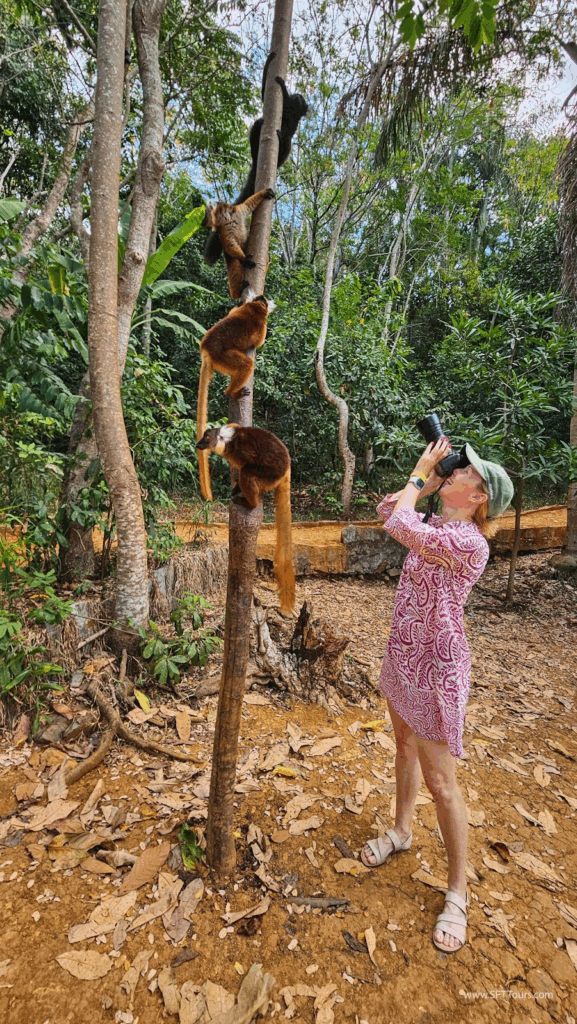
At beach resorts, anything goes and you can wear spaghetti strap dresses, florals, etc. but comfy and loose options are probably best for the heat and humidity.
Dressing up is not necessary since this is a barefoot kind of luxury where you will literally not wear any shoes, and walk on sandy paths or board walks.
Shorts and t-shirts
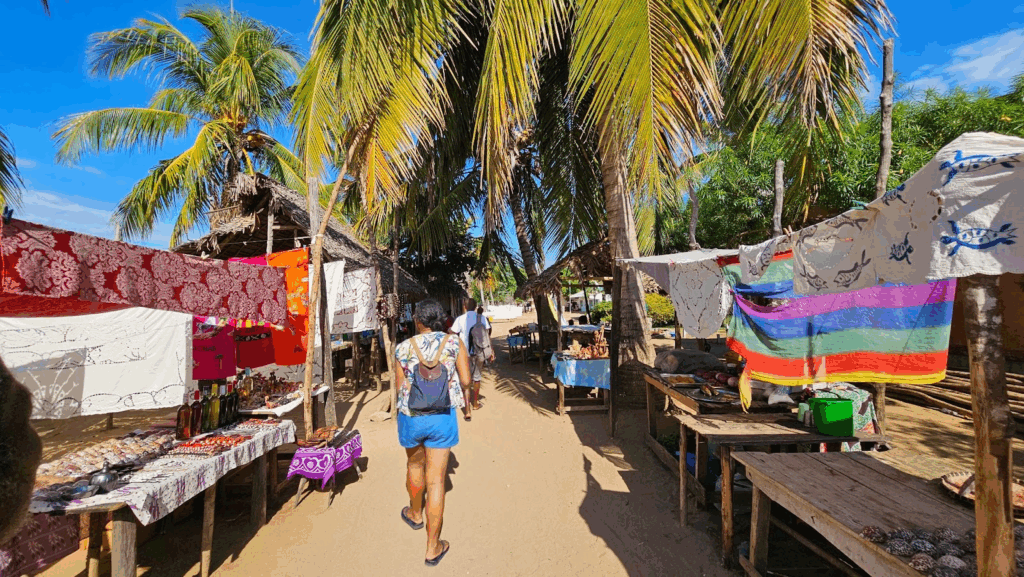
If you don’t like to wear dresses, shorts are a good alternative, but it is best if they aren’t hot pants or cut really short because locals don’t dress that way.
Cotton shorts, chinos or even any kind of sports shorts will come in handy at the beach resorts and islands to go on the daily excursions diving, snorkeling or island hopping.
Pair your shorts with a cute tshirt, a sleeveless one, a strapless T, a tank top or a blouse that may be floral, with a design or have details that make them a bit more than just a white t-shirt. Or go for the long sleeved rash guard for sun protection on boat trips.
I avoid thick or stiff materials like denim that are not great when it’s hot and humid and you are sweating a lot, plus they take a long time to dry.
Cropped pants
I am a big fan of crop pants because they can be really cute, come in a variety of materials and are fun yet conservative and cover me from the sun, plus they fit my silhouette and are comfy without any risk of chafing. They will be a good outfit for the cities.
A pair of cropped linen pants that are loose and fresh will be comfy for city exploration.
Long hiking pants
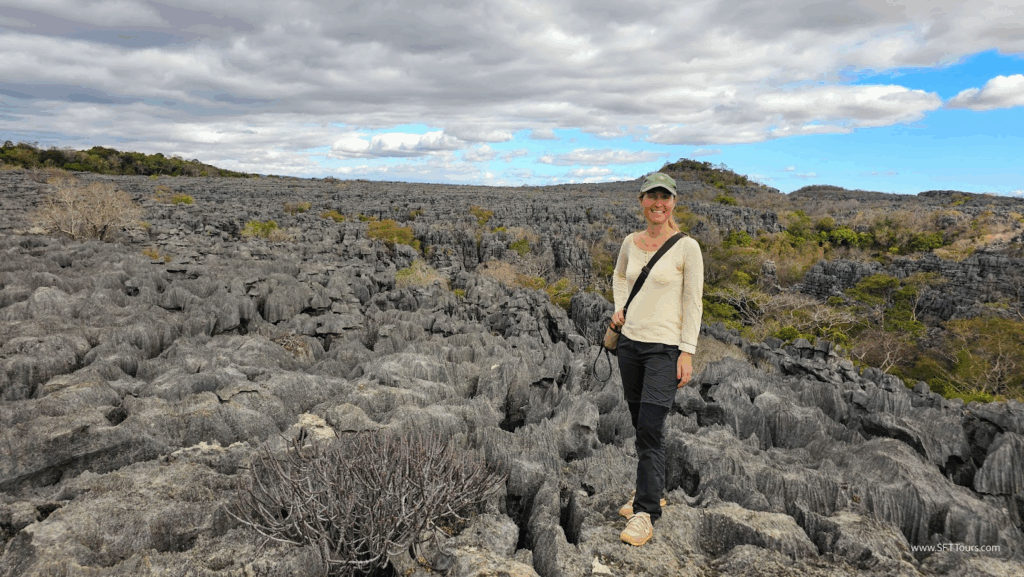
For the national park hiking excursions, a good pair of long hiking pants will come in handy to protect from branches and grasses and keep mosquito bites to a minimum.
Opt for the quick dry ones in case of showers or if they are muddied and need a quick wash or rinse.
Linen shirts and slacks
Linen is a great material for the hot summer weather and I love to wear it, especially in loose fitting shirts over leggings or as a pair of long trousers for a more stylish evening outfit.
However, the main issue when traveling with linen clothing is that it requires ironing and I don’t like to iron when I am on holidays. To minimize creasing, check out our packing hacks and roll your clothes.
Leggings and yoga pants
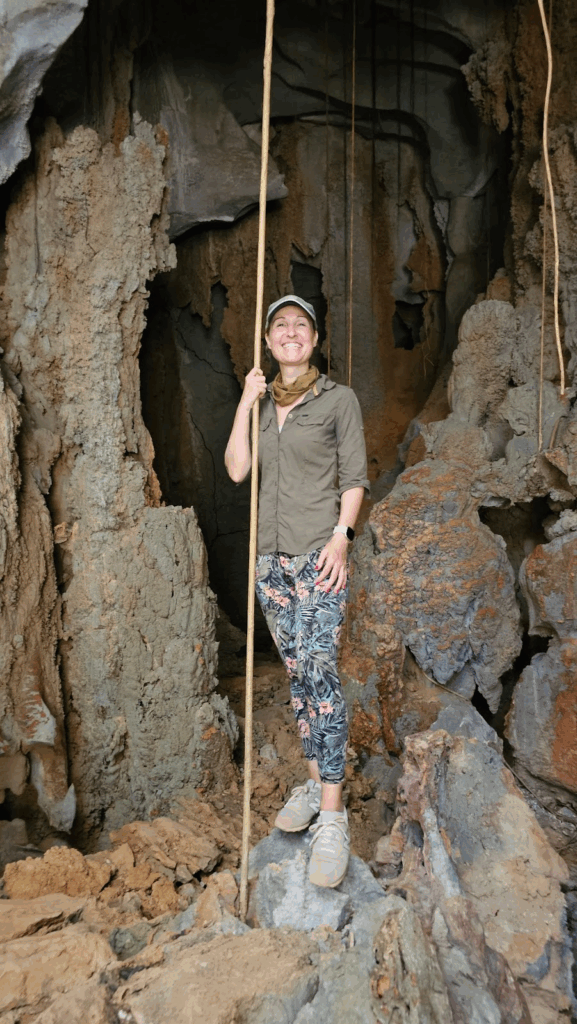
Leggings or yoga pants are another comfortable alternative to the hiking pans if you don’t have any. They cover your legs and can pair up with lots of tops.
They are light, don’t occupy a lot of space in your suitcase, don’t need ironing and are quite comfy to wear. Plus, they collect the sweat so it does not drip down your back or legs.
Choose the lighter, thinner leggings in natural fabrics and not the thicker ones which will result in you sweating even more.
Swimwear and kaftan / overalls
Whether you prefer a bikini or a swimming suit, you can’t visit Madagascar without bringing several pieces of swimwear with you so one can dry while you wear the other snorkelling, diving or island hopping. Throw on a kaftan or overall to head to lunch after a lazy morning.
Hiking shoes
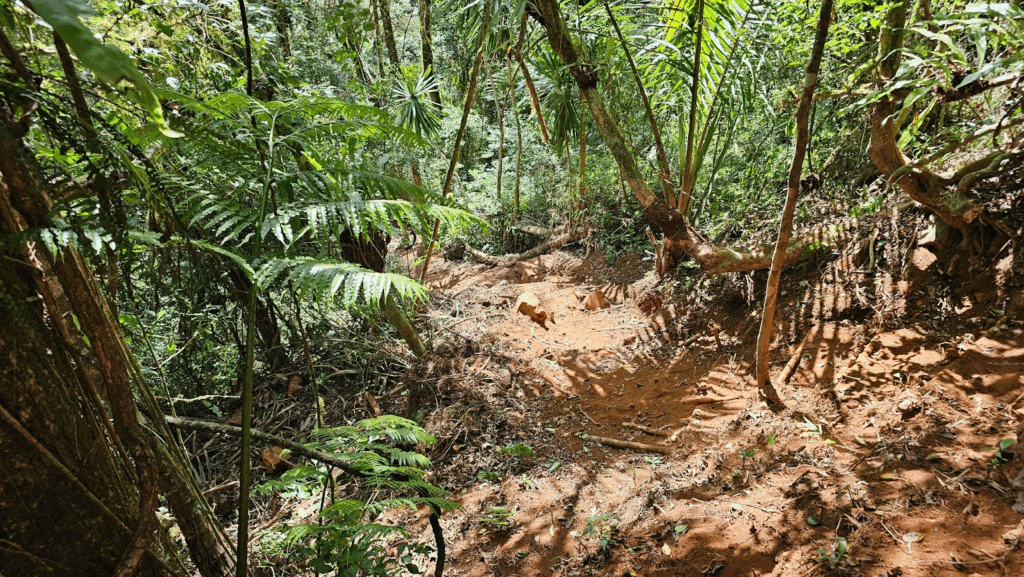
For all the hiking in the national parks to chase lemurs and chameleons, you will need a good pair of waterproof hiking shoes that have grip and are designed for muddy terrain. While a hiking boot will also work, you probably only need a lower version which may be more comfortable for long drives.
These bestselling lightweight, waterproof hiking boots from Merrel have grip and are a good option for hot destinations. Or you can opt for their ankle high model.
If you have a pair of waterproof sneakers, you could also do away with them so you don’t have to buy a new pair of hiking shoes. We will be walking on mostly flat terrain and rather slowly, looking for wildlife, so you have the chance to watch your step.
Sandals
If you prefer to wear something a bit more structured than flip flops while at the beach, waterproof sandals are also a great idea. This way, you can wear them on island exploration and your feet will be better protected:
- Teva sandals are universally worn by many of our guests. They are comfortable, they have grip and are attached to your foot. These rubber sole ones are popular.
- Since last summer, these Plaka rope sandals have made an entrance and are now favored by many of our guests.
- Reef also makes cute sports waterproof sandals that are designed for comfort.
- Water shoes like these ones or these mesh slip-on are an alternative to sandals if you prefer your feet to be better protected.
A fleece

Don’t be fooled by the high temperatures, Tana and its surroundings can be quite chilly in the winter months and even the national parks can cool down a lot when not directly at the beach.
In Andasibe, and even in Montagne d’Argent, temperatures can drop and you may need a jacket. Pack an all-terrain fleece that you can use both in the city as well as in the national parks while hiking. It can be the same one you will wear in the plane.
A buff
The sun can be quite strong in Red Tsingy and while climbing in Ankarana, a buff is a good way to protect from the sun and dust. It will also come in handy in Tana or Andasibe when temperatures drop.
Other things to pack for Madagascar
Besides clothing, there are a few other things worth packing for your trip to Madagascar.
Besides clothing, there are a few other things worth packing for your trip to Madagascar.
_________________________
| A light waterproof backpack: For hiking and water activities and excursions, a light waterproof backpack will be useful. This roll-top waterproof backpack comes with a dry bag for the phone, is multi-purpose and packs down flat. Or buy a rain cover for your regular backpack in case of rain. | |
| Neck fan: On our women-only tours in hot destinations like Greece, Italy’s Amalfi Coast and Tanzania, guests rave about this portable air neck fan conditioner you wear around your neck. The fan blows out cool air and can be recharged with a USB cable. | |
| A sun hat and a cap: As mentioned, the sun will be shining all day long so a hat is a great way to protect eyes and face from the sun exposure while at the beach resort. A cap will be more useful for the hiking bits. Check out this wide brim one. | |
| A rain jacket or poncho: Even in the dry season, rain is possible. Pack a light packable raincoat or a poncho and have it with you when out all day so you can stay warm. | |
| Universal plug adaptor: Madagascar uses standard two round prong European plugs. I like the plug adaptors which come with USB ports. I love this one because it has USB ports for all the electronics I now carry. |
| Power bank: This Anker Portable Charger has a 20000mAh capacity, and fast-charging USB-C ports, you can power up your devices in a flash, while the LED display keeps you in the know about your battery level. | |
| Binoculars: If you are an avid wildlife lover, you may want to pack a pair of compact binoculars. Park guides typically have their own pair you can borrow but if you don’t want to share, you can consider bringing your own. Unless you have a long lens camera, the binoculars are going to be a great way to observe animals from closer so I highly recommend bringing a pair. These ones can be attached to your phone so you can take photos as if you had a long lens. Saves you having to buy a very expensive camera + lens running in the thousands. | |
| Sports bras: We will be spending several hours in a 4WD driving across bumpy, unpaved and possibly potholed park roads. Many women find that sports bras, especially those designed for running like these ones, help and are better than wire bras. | |
| Sunglasses: A pair of good sunglasses is an essential travel item in Madagascar. I like Oakley sunglasses as they are polarized and protect your eyes from any damaging sun rays. I always wear them. Yes, they are not fashionable, but I have sensitive eyes that don’t like bright days, so they are a lifesaver for me. Lately, they have been launching more modern and stylish models. Check out their store on Amazon. | |
| Environmentally friendly toiletries: We will be spending a large amount of time in nature and we highly recommend you bring toiletries that are environmentally friendly. It is a good idea to pack chemical-free solid shampoo, conditioner, deodorants and shower bars instead of liquids to minimize space and environmental impact. I particularly like brands Ethique. They also sell samplers so you can try a few of their products and see if it is for you. Consider other sustainable products such as toothpaste bits or reusable cotton buds to minimize the wastage you leave behind. PS: Bring a ziplock bag to store the bars after use since you may not have time to wait for them to dry before having to pack and check out. |
| Water purifier bottle: Make sure to always have safe drinking water anywhere with a water purifier bottle from Grayl. I have used it in more than 15 countries to turn tap water into drinking water. Bottled water is available in Madagascar but plastic rubbish is a real issue and tap water is not drinkable. | |
| Electrolytes or rehydration tablets: Maybe the fact that toilets aren’t great or that we will spend time in nature away from stores and infrastructure, but it’s common to drink less than usual so you end up having a headache, the first symptom of dehydration. I like to bring these hydrating tablets from Nuun with me, always. They also come in handy if you end up with travelers’ diarrhoea where the risk of dehydration is high. | |
| Biodegradable tissue and wet wipes: It’s a good idea to have a small packet of biodegradable wet towels handy when using the public restrooms or after a hike. These ones are specifically designed for outdoorsy people. | |
| Repellent, repellent, repellent: Madagascar is a tropical island and there are mosquitoes, so you should pack repellent. Everyone has their favorites, from the natural repellents that use citronella and other ingredients to the DEET-based repellents. If you decide to use DEET-based repellent, beware that it is a toxic chemical and you should apply it in an airy place and wash your hands thoroughly to avoid having an upset stomach (from then touching your mouth). If you buy repellents with a high concentration of DEET (eg. over 50%) beware that their chemicals may melt plastic, including the bag which you may store them in or your sneakers (yep, true story)! I prefer to spray repellent on my clothes instead of on my skin. I have relied on the brand Repel at home in Singapore and in the bush and tropical jungles for years, and it always works. |
| Sun protection: Sunscreen is so important as Madagascar has some of the highest UV rays in the world, and can cause skin damage, especially during the dry month’s extended daylight hours. I highly recommend Aussie brand Sun Bum which is specifically designed for the strong sun, is vegan, reef-safe and smells heavenly. They have a travel pack with sizes below 100ml that comes with a pretty pouch and includes sunscreen, lip balm (very important) and aftersun. | |
| Lip balm: The sun makes it particularly tough for the skin and lips so you should bring a lip balm to stay moisturized. I find these are essential to not end up with completely ruined lips or even blisters. I love and use Laneige lip balm and their lip sleeping mask. | |
| Motion sickness patches: Most of the roads in Madagascar are bumpy, and if you are prone to motion sickness you are likely to feel it. Many of the guests on our tours use motion sickness patches, and they spend a week without getting sick. | |
| Anti chaffing: If you plan to wear shorts, this highly recommended anti-chaffing stick will help save your thighs. PS: it also helps with blisters. | |
| Female sanitary products: Pads may be hard to find and tampons are non-existent so bring enough of your favorite ones for the duration of your trip. |
| A phone lanyard: A phone lanyard is super useful to travel with, to Madagascar or anywhere. It will help you have free hands but your phone always handy for photos, and it will prevent theft. I have this one. | |
| Sleep mask: Although hotels have proper blinds, you will be sharing the room with another traveler who may be a late owl. Bring a sleep mask like this one to block the light. Or upgrade to Manta Sleep, I have been using the sound mask for months now and it is INCREDIBLE both for the flight as well as to sleep at night and get over the jetlag. It is magic when paired with my Calm app. | |
| Travel pillow: If you are flying overnight, you will need a proper neck pillow to sleep and arrive rested. Me and Meg both use the Turtle neck. | |
| Pajamas: As mentioned, you will most likely be sharing a room so don’t forget to pack your pajamas! Here’s a comfy choice from Amazon. | |
| Ear plugs: It is never a bad idea to have a pair of earplugs handy, for the flight, a noisy neighbor or an antsy roommate. Check out these from Amazon. |
| First aid kit and medication: Available medications, brands and products in Madagascar may not be the same back home so it’s always best to bring everything you are used to and of course, all prescription medication or vitamins you take. I also recommend packing a basic first aid kit with items such as plasters, an antiseptic ointment, eye drops, hydration powder, etc. Have a look at our suggested first aid kit here. | |
| A foldable toiletry bag: I always travel with a foldable toiletry bag which I can hang anywhere. You will be moving around a lot on any trip to Iceland because of the fact that most people visit on a road trip, so you save on packing and unpacking. They also help you keep everything easy to find and tidy. This one is very cute. | |
| Vaccination certificates: If you are coming from an endemic Yellow Fever area or transition through one for more than 12h, you should make sure you have taken your Yellow Fever shot. This includes coming in from Ethiopia or Kenya or transiting through either for more than 12h. |
